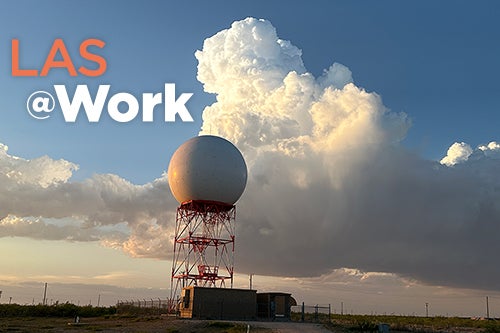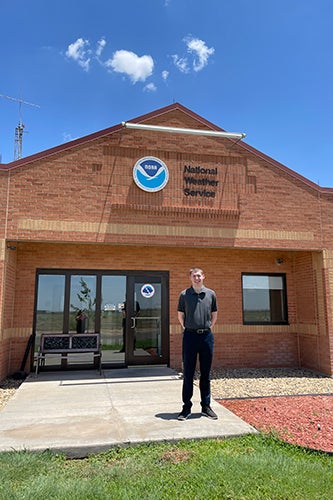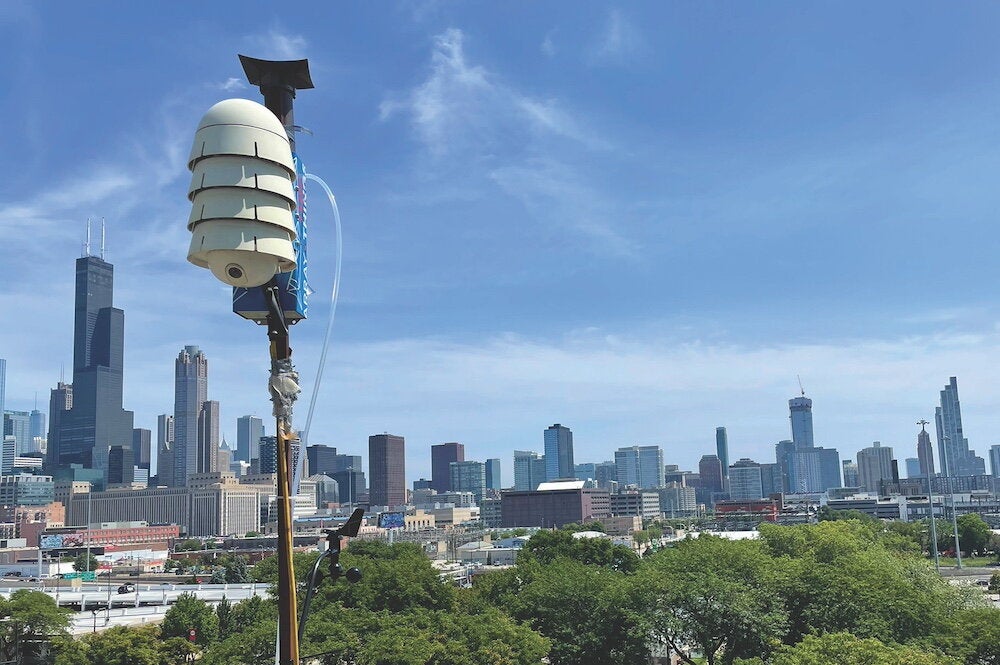


As summer storms roll though your region, have you wondered who is behind the science of a weather warning?
In west Texas and portions of southeast New Mexico, College of LAS alumnus Devin Chehak (BS, ’18, atmospheric sciences; MS, ‘20, atmospheric sciences) is part of the team that creates the watches and warnings that have the potential to save lives. He is as a general forecaster and meteorologist for the National Weather Service.
Please briefly describe a typical workday. Also, what is an example of the most interesting aspect of your job?
A typical workday consists of monitoring current weather conditions and communicating conditions and forecast information to our partners and the public. This information is communicated through our website, social media channels, phone calls, and email briefings. We continually monitor local weather conditions for nearby airports. This includes forecast updates every six hours. Twice a day we create an updated forecast for the next eight days for our area of responsibility. This area covers much of west Texas and portions of southeast New Mexico. This forecast includes information on temperature, probability of precipitation, wind, rainfall amounts, and much more. This forecast also consists of aspects of fire weather, which is communicated to state and local responders. Twice daily we launch a weather balloon. Attached to this balloon is a radiosonde which sends back data on the vertical profile of the atmosphere which is used in forecast models and our local forecast.
The most interesting aspect of my job would definitely be severe weather operations. During severe weather we are tasked with constant monitoring of thunderstorms using radar and satellite data. If a storm becomes strong to severe, we issue products that you may see on the local news, your cell phone, or various other places, like a Severe Thunderstorm Warning or a Tornado Warning. We also continually notify local responders and partners of impending hazards. We collect thunderstorm reports and report that data and update our warnings based on ground truth. Severe operations are very hectic and very taxing but extremely rewarding as it is the most direct way of fulfilling our mission of protecting life and property.
In hindsight, what about college best prepared you for your life and career?
The numerous opportunities outside of normal classwork gave me the additional skills and knowledge to prepare for life and my career. I participated in the local chapters of the American Meteorological Society. I did undergraduate and graduate level research projects and presentations at various conferences. I also took an internship at the Illinois State Water Survey helping to update and understand changing climate and severe weather and excessive heat. All these activities gave me valuable skills to make me a more rounded person in my life and my career.
How did your major prepare you for your career?
My major gave me thorough knowledge of weather and climate and the various connections between the two. This included a complete understanding of the physical processes that lead to the weather we experience on Earth.
What do you like best about your work?
It’s a bit of a love/hate relationship, but you never real know what will transpire on any given day. This keeps the job interesting but can be equally frustrating. An example would be a surprise snow event that transpired early this year. We were not expecting any snow to reach the area and had to continually update our forecast to account for these changing conditions and communicate this to our partners when heavy snow eventually developed and moved into our area.
Please describe your proudest achievement.
My proudest achievement isn’t any one event. I am proud of every major weather event I am a part of. From helping to try to understand the forecast models and making an accurate forecast, to communicating to partners and the public the expected impacts. I am proud to serve those in my community and work towards the goal of the National Weather Service, protecting life and property.
Editor's note: This LAS@Work profile is part of a series that features College of LAS alumni and their careers. Visit here to read more.


